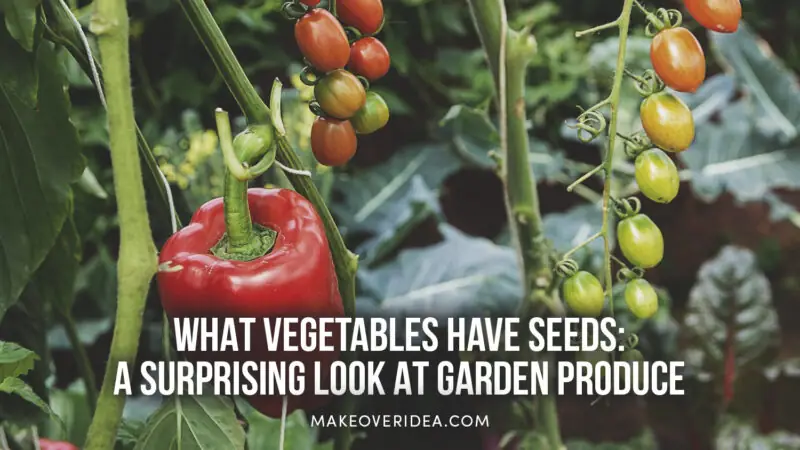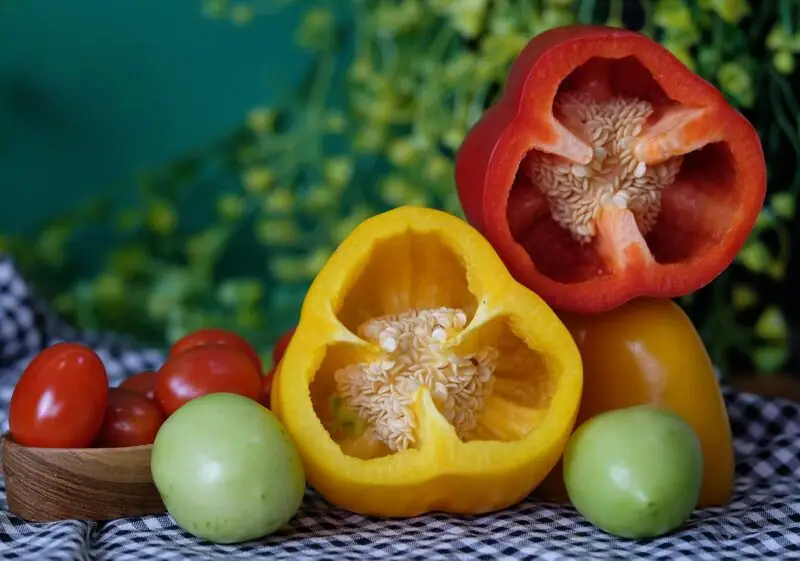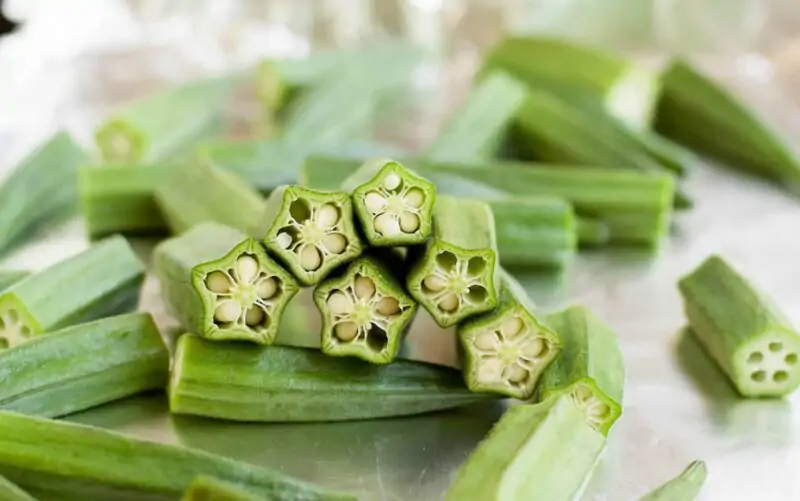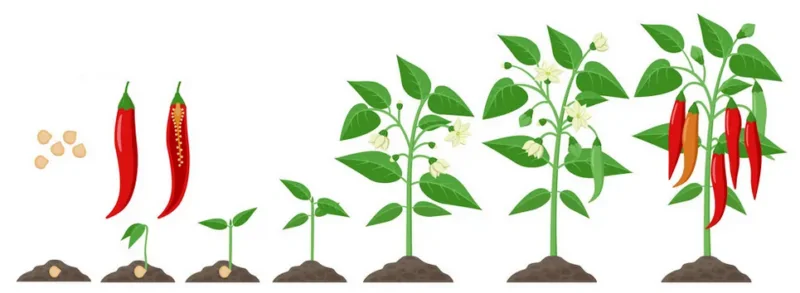What Vegetables Have Seeds? A Comprehensive Guide

What vegetables have seeds? Contrary to popular belief, such plants are an essential part of our diet and the world around us. In this comprehensive guide, we will dive into everything you need to know about vegetables with seeds, including what constitutes a vegetable, common seed-bearing veggies, and their unique scientific properties. Let’s start uncovering!
Understanding Vegetables with Seeds
To understand why some vegetables come with seeds, it’s important to first define what exactly is considered to be a vegetable.

What constitutes a vegetable?
Vegetables are defined as any edible part of plants that are used in savory dishes or eaten raw. This includes roots (like carrots and beets), stems (such as asparagus), leafy parts (like spinach, celery, and lettuce), flowers (such as broccoli), and even certain fruits like tomatoes.
The difference between fruits and vegetables
Speaking of tomatoes – did you know that technically they’re not just a fruit but also classified as both fruit AND a vegetable? Confusing right?
In botanical terms, tomatoes are scientifically classified as fruits for a simple reason that anything that grows from the ovary of flowering plants is considered fruit. This also means that things like cucumbers and green peppers – foods that many of us believe to be vegetables are actually fruits!
Still, when we talk about food categories for cooking or nutrition purposes, most people use a system that presumes that we distinguish by taste. In this approach, sweet equals fruit, and savory equals vegetable. So, even though peppers have seeds, they are not as sweet as pears, apples, and plums are, and most of us believes that peppers are vegetables. In fact, people are so accustomed to sweet fruits, that when it comes to such fruits with seeds as avocados, some of us are calling them vegetables – because avocados don’t have the ‘proper’ sweet taste!
Appropriate and suitable for cooking, this system, however, is scientifically considered to be superficial – and now you know why.
Examples of Vegetables Actually Containing Seeds
Many common household favorites fall under this category because almost all veggies contain at least one seed – unless bred specifically for being seedless! Here’s more on two popular choices:
Peppers: A colorful and seed-filled delight
Peppers come in so many vibrant colors – reds, greens, yellows, oranges, and purples – but no matter which color variety you choose, every pepper contains tiny white seeds inside them. They’re easy to remove if desired (just slice open lengthwise & scoop out), but these flavorful bits can be used for growing or cooking if you’d like. As for the fleshy part that surrounds the seeds, it’s crunchy, juicy, and absolutely delightful!
Tomatoes: The controversial fruit-vegetable hybrid
One of the most popular choices for salads, tomatoes are simultaneously classified as both fruits and vegetables. While many people remove the seeds to avoid a slightly bitter taste, they’re actually completely edible (and nutritious!). Seeds from tomato fruit are important parts of the plant that can be saved and grown into new plants!
Unusual Seed-Bearing Vegetables
These may not be household names but you will surely find seeds in them!
Okra: A unique vegetable packed with seeds

Okra is a popular ingredient in South Asian cuisine known for its unique texture and tons of little white seeds inside. This versatile veggie serves up a punch of nutrition along with an interesting flavor profile. By harvesting mature okra pods, the contained seeds can then be dried & stored for eating or sprouting and replanting.
Cucumbers: The hidden seeds within
Cucumbers tend to get overlooked when it comes to their seed-bearing properties because most store-bought varieties have been bred specifically to reduce the number of visible large black/brownish ovules that make them appear less appetizing. So, while it would be an overstatement to say that cucumbers don’t contain seeds, this part of a plant is often as inconspicuous as possible.
Sill, if you take a closer look, you will notice that cucumbers do not come without seeds and indeed contain many small white oval-shaped ones! In fact, cucumbers are part of a group called “pepo” fruits, which includes pumpkins, melons, squash and gourds.
The Science Behind Seeds in Vegetables
Now we’ll dive a bit deeper into how these seemingly harmless bits actually play such an important role in vegetable production.
How do vegetables produce seeds?
Vegetable plants produce flowers just like flowering trees or shrubs; these blooms must be pollinated via insects (like bees) before producing what eventually becomes the reproductive organ – the fruit/seed – which bears numerous tiny immature embryos. Each of them is waiting to germinate upon getting planted – and eventually produce the next generation of plants.
The whole point behind this process is propagation – creating new offspring so plant species don’t die out easily. Unlike annual crops that grow and produce seeds in a single season, perennials usually take more than one year to develop properly.
The role of seeds in vegetable reproduction

Seeds act as the catalyst for new plant growth. Each seed is a small nursery that holds all the genetic information about their parent plants, ensuring that new generations will carry on similar traits – both good and bad. This is the reason why many gardeners save and replant certain varieties year after year.
When germination occurs, a small root emerges from inside the seed casing and begins growing downward, while at the same time pushing up a slender stem with two embryonic leaves above ground. This eventually develops into mature foliage, flowers, and fruits/seeds.
FAQs
Here are some common questions people may have about vegetables with seeds:
As we’ve mentioned throughout this article, most veggies come with them – pepper, tomato, cucumber, okra, etc.
Root veggies such as carrots, turnips, or beets do indeed contain tiny immature embryos within their flowers (often not seen because they don’t flower or flower underground). These “seeds” can be saved if desired for planting next season!
It’s all part of nature’s way of propagating life by producing offspring! While annual crops only last one season before going to seed, perennial plants tend to wait until the plant is mature or there is an optimal environment before reproducing through budding or flowering.
Vegetables (and fruits) go through pollination via insects like bees who transfer pollen from male reproductive organs (stamens) to female parts (pistils); when the plant is fertilized, the fruit starts to develop as an ovary swells around developing embryo(s).
All living organisms need ways of reproducing themselves, so it’s safe to say almost every vegetable you eat has some sort of seed-bearing component!
Some modern hybrids have been bred to be as seedless as possible (think seedless grapes or watermelons) but even this can be a tricky artificial process.
Generally speaking, there aren’t many common veggies that are completely void of small immature plant embryos. However, since “seeds” refer to the matured dried fruit of flowering plants, it’s worth noting that certain parts like roots and tubers tend not to produce flowers at all, which means no true seeds. Examples include potatoes and sweet potatoes: they are relatively easy to grow and you don’t see their seeds.
Seeds are just one method – there’s also vegetative reproduction via cuttings, where you take part of an existing plant stem with leaves and set it in another area until roots form, then transplant them into soil!
Conclusion
We hope this guide has provided some insight into the botanical world and you now know what vegetables have seeds. From peppers, tomatoes, okra, cucumbers, and more – understanding their role in vegetable propagation is crucial for gardeners or anyone who loves eating fresh produce. With so many varieties available for culinary usage (and potential gardening fun), why not dig deeper today?